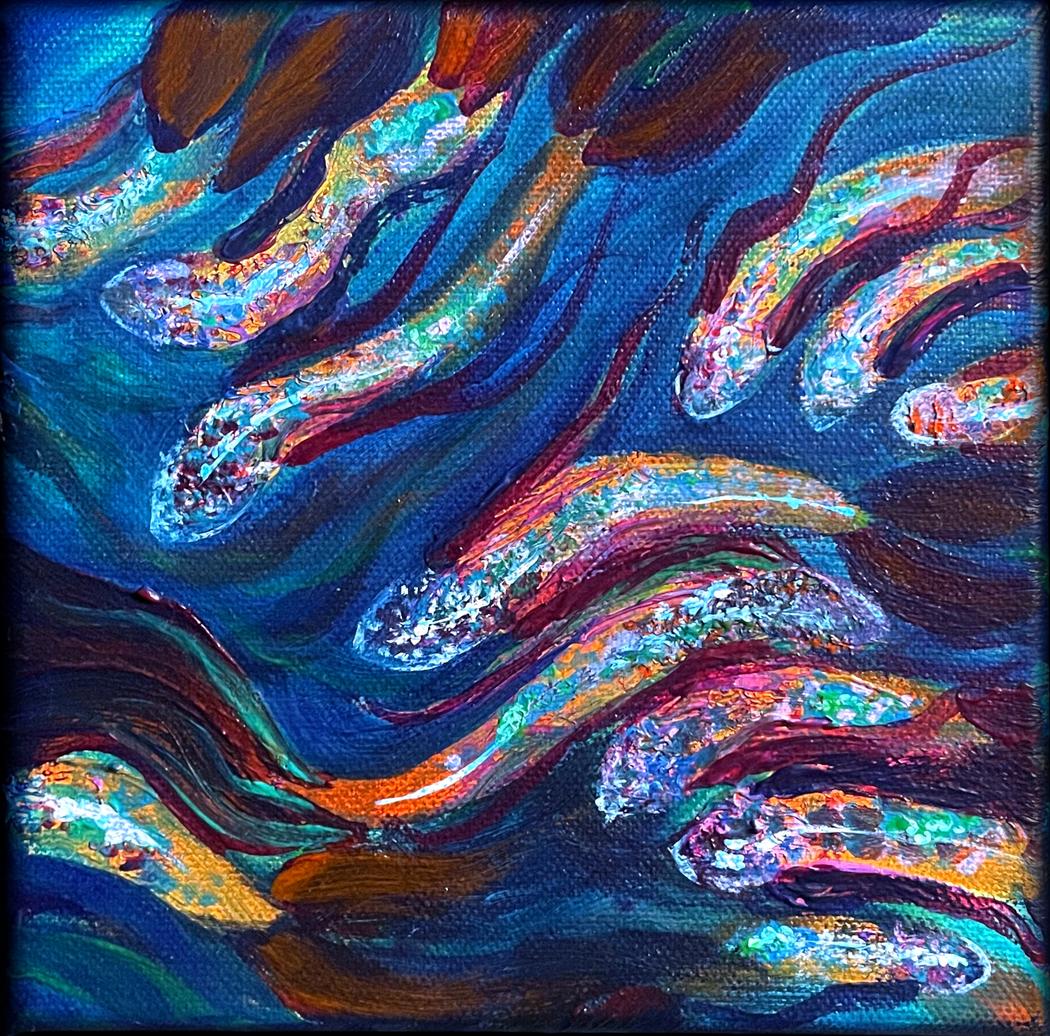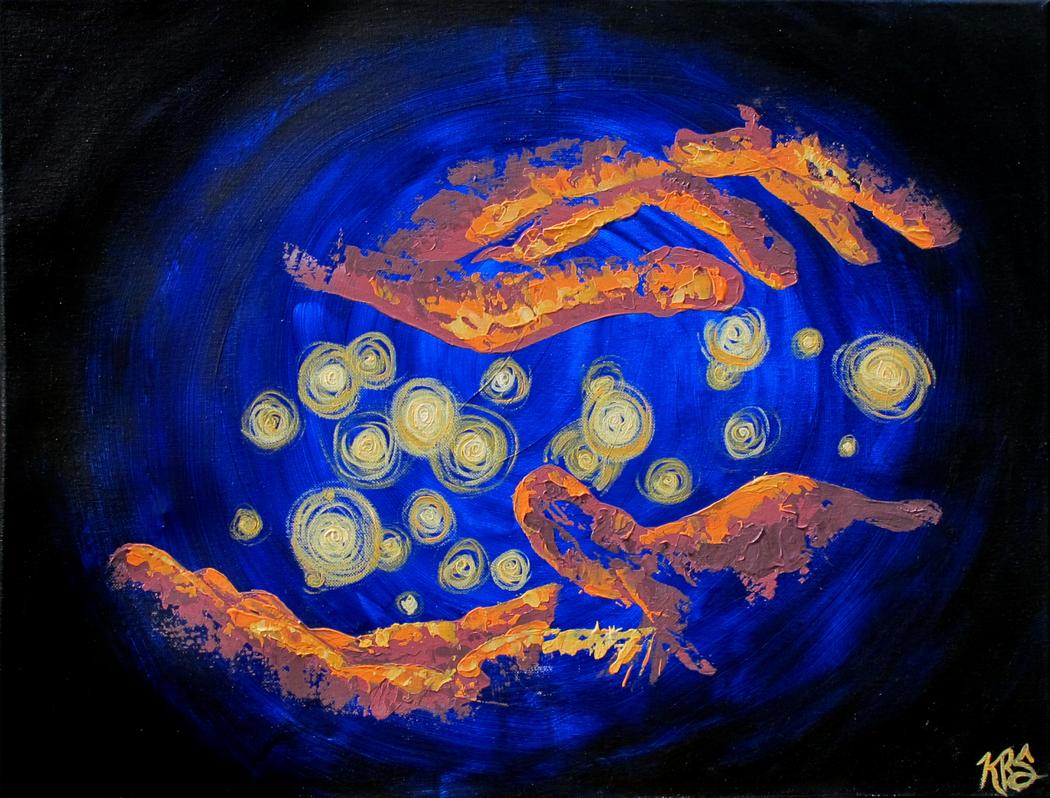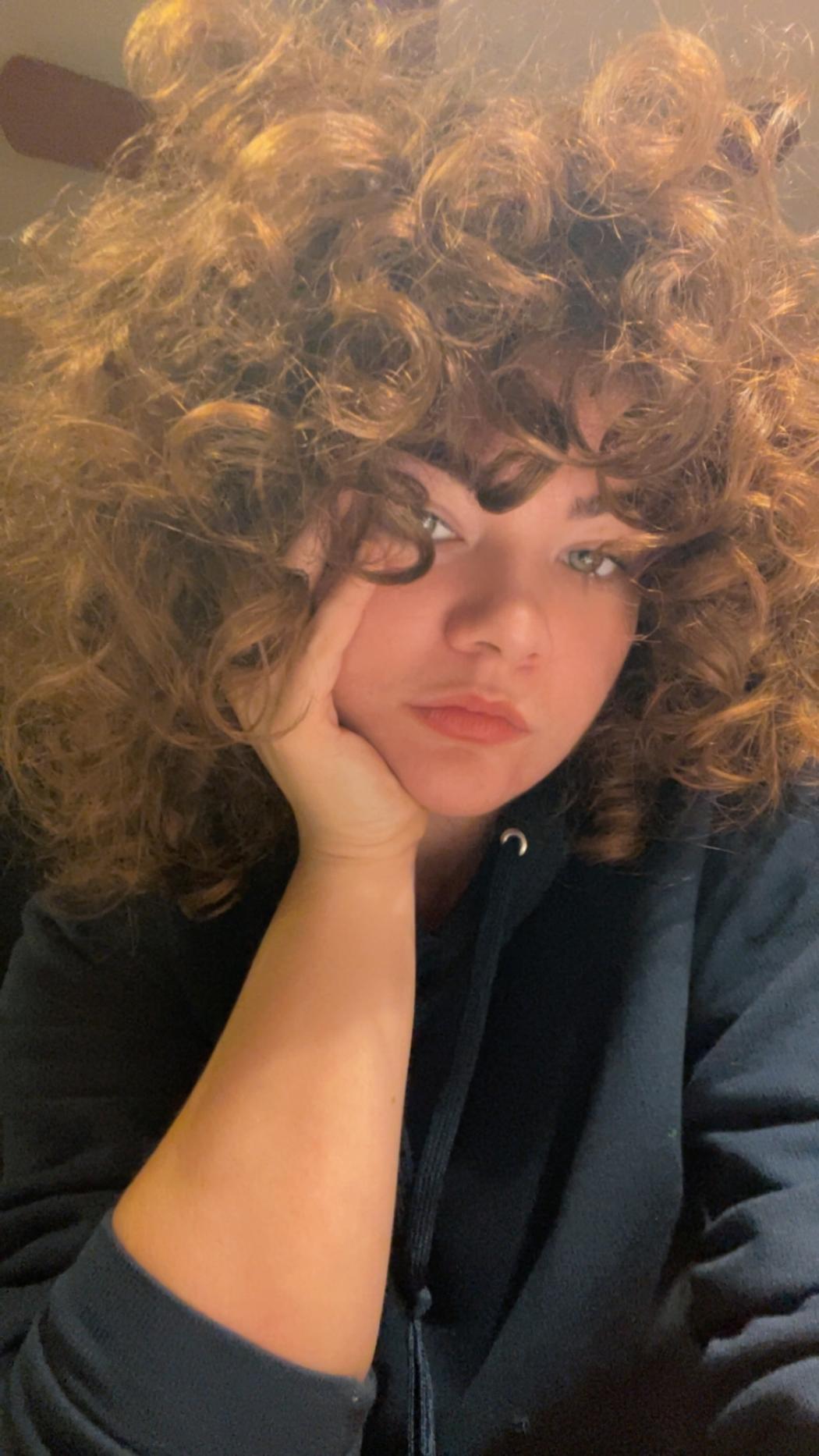Kaitlyn Synan
Your work often explores the fleeting nature of emotions. Can you describe a recent emotional experience that inspired a specific piece?
The first piece that comes to mind is actually my most popular work, Mycelial Spirit. I painted it after a rough breakup last year. It depicts a woman with mushrooms growing across her face and head, bathed in pink and purple tones. Glowing golden spirals are behind her. She looks serene, completely unaware she is being consumed. At the time, I was repeating a pattern I’d seen in multiple relationships: letting my soul be eaten alive. I was constantly editing myself to be more palatable and easier to love, working endlessly for affection. I even stopped painting for a while. I told myself I was content with that, but the truth is, I chose it because it felt familiar. Mycelial Spirit became my turning point. It was a promise to myself that the only thing I will ever allow to consume me so completely will be my art, as it always should have been.
How do you choose the color palettes for your paintings? Do they stem from intuition, symbolism, or specific moods?
Intuition and contrast play a huge role in the initial stages of my paintings. I enjoy working with complementary colors, particularly by layering them in creative and interesting ways. The saturation you can achieve is so much fun. I love the slow transformation from a dull, transparent blue to a fiery orange. That heightening intensity is really cool to witness. The process of painting just really mimics my personality. I go from long periods of dead quiet to passionately talking your ear off. It seems to fit.

Many of your works incorporate swirling, organic forms. What do these forms represent for you personally?
I don’t believe in coincidences. I think everything is insanely connected, in both subtle and obvious ways. If you go down the rabbit hole, it’s really chaotic and interwoven. Every single action ripples to impact everything else, no matter how distantly related. These swirls are pretty consistent in my work. They are my little nod to the fact that, no matter how separate things seem, it really isn’t. Art and math are incredibly different, down to the personality of the person participating, but both are ways of understanding and interpreting. Even science and journalism, which are completely opposite sides of the same ‘I want to know’ coin, constantly impact each other’s understanding. Now we know you can apply math equations to paintings and see why they’re aesthetically pleasing. Journalism is always asking why, and then science tries to find out.
You describe your practice as spiritual. Could you elaborate on how spirituality guides your creative process?
I see this lifetime as a temporary experience, one abundant in lessons and experiences, everything interconnected. The human experience is so unique, I think of it as a kind of soul school. For what? Who knows, but I know I’ve come to learn about people, places, and theories, just by the experience of living, but where’s the place to learn about myself? How do I come to know myself as I do about math or history outside of lived experience? For me, that’s when I’m painting.
How do you see the concept of impermanence reflected in your artistic technique or material choices?
In painting, or any act of creating, there is an element of destruction that is intertwined with the process. From the first swipe of colorful paint on a white canvas, to an accidental paintwater spill, and even placing your signature, adapting with change and accepting that nothing is truly concrete until the piece is finished, it comes with the creative territory. Then the compliment of working in acrylic, quick drying layers, constant remixing, or the facepalm when running out of a specific color when you know every store is closed. Evolving with the piece or medium is a fun and more chaotic aspect of being an artist.
 Kaitlyn Synan | Celestial Touch
Kaitlyn Synan | Celestial Touch
Several of your paintings feel like portals into other dimensions. Are there recurring dreams, visions, or places that influence this aesthetic?
In a sense, my paintings result in an expression of how I generally experience the world, which is a huge contrast from the emotional processing that takes place at the start of my creative processes. My work carries emotional weight in the product, but I would say the bright and colorful nature of my work comes from my optimistic experience of the world. Not in a sense of denial and that nothing is wrong, but with faith in the work of others, and the work I put in myself, to create and live in a world I want to see, full of reflection, recalibration, and renewal.
“Finding the light in the darkness” is a recurring theme in your statement. How do you navigate this duality in your work?
I won’t lie, it’s tough. I paint when I’m processing something emotionally, usually something heavy. The canvas holds my raw thoughts and feelings, often the darker ones. When the piece is finished, it’s light-filled and colorful, mirroring the way I feel after a painting session. In that sense, the work itself alchemizes the darkness into light, taking some of the duel out of the duality. My finished work also mirrors my optimism and bright vision, with a seriousness that I as a person don’t carry. The biggest contrast in my work is between my work and me. In person, I’m bubbly, quirky, and rarely serious. I love dancing on weekends and striking up conversations with strangers. Whereas my work is deeply reflective and rich. It’s a strange but satisfying experience discussing the emotional weight of my art while also being someone who laughs easily and finds the fun in most things. That tension keeps both my work and my life interesting.


Leave a Reply